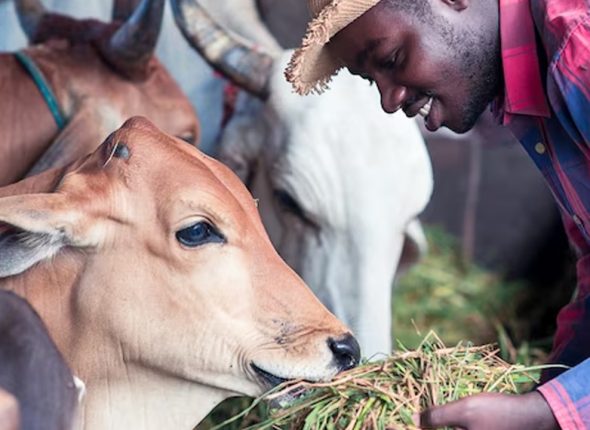Livestock refers to animals that are domesticated primarily for food. They can also be referred to as “food animals”. In Nigeria, the common livestock animals are Poultry birds (Chicken, Turkey, Quail, Duck), Cattle, Small ruminants (Goats and Sheep), Pigs, Rabbits, and in some parts of the northern region of the country, Donkeys, Camels, and Horses. The most commonly reared ones are Chickens, Cattle, Goats, and Sheep.
According to a Federal Ministry of Agriculture and Rural Development (FMARD, 2017) report, the number of livestock animals produced annually in Nigeria was as follows – 180 million poultry birds; 76 million goats, 43.4 million sheep, 18.4 million cattle, 7.5 million pigs, 1.4 million Equids (horses and donkeys). Of these numbers, the majority of the animals were reportedly raised in free-range production systems which comprise smallholders and nomadic herders.
What you’ll learn
- Pest biology and identification.
- Health and nutrition of farm animals.
- Management and production of cattle, sheep, poultry, pig and goats.
- Farm and equipment safety.
- Soils and soil fertility.
- Ruminant animal health.
- Forage crop production.
- Dairy production and management.
Requirements
- Basic proficiency in the English language, numeracy and computer literacy.
- Candidates must have access to either a computer or smartphone with internet connectivity.
- They must be equipped with quality webcam and headphones.
Duration & Fees
- Regular – 8 Weeks – ₦150,000
- Fast-Track – 6 Weeks – ₦225,000
Program Dates
- August – October, 2024
- October – December, 2024
- February – April, 2025
- May – July, 2025
Curriculum
- 7 Sections
- 25 Lessons
- 10
- Module 15
- 1.1Lesson 1: An Overview of Animal Production: Concepts, Roles, Constraints and Strategies
- 1.2Lesson 2: Effects of the Tropical Environment on Animal Production
- 1.3Lesson 3: Adaptation and Acclimatization as Means of Coping with Environmental Stress
- 1.4Lesson 4: Systems of Livestock Production
- 1.5Lesson 5: Principles and Techniques in Livestock Breeding
- Module 24
- Module 34
- Module 43
- Module 53
- Module 63
- Module 73










